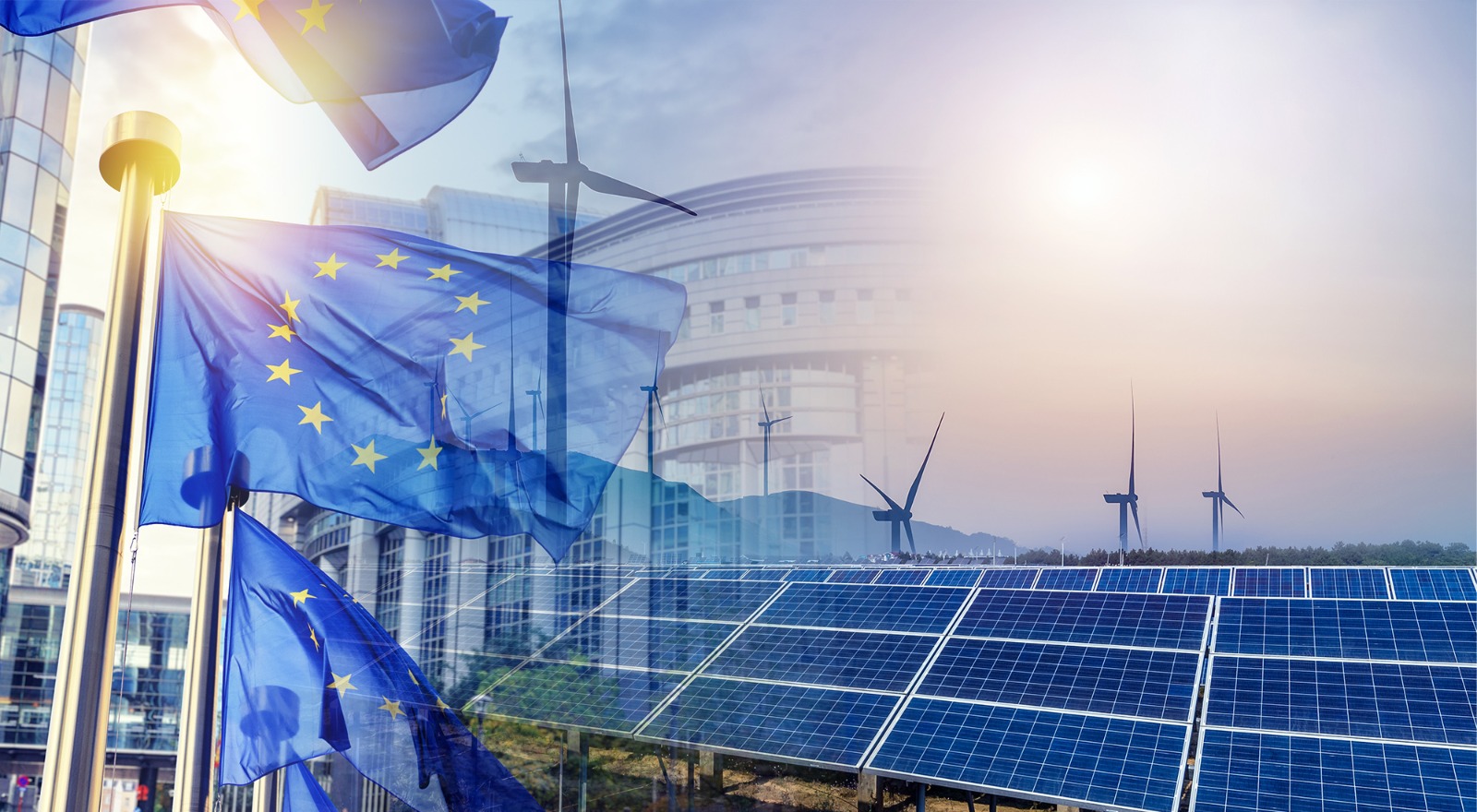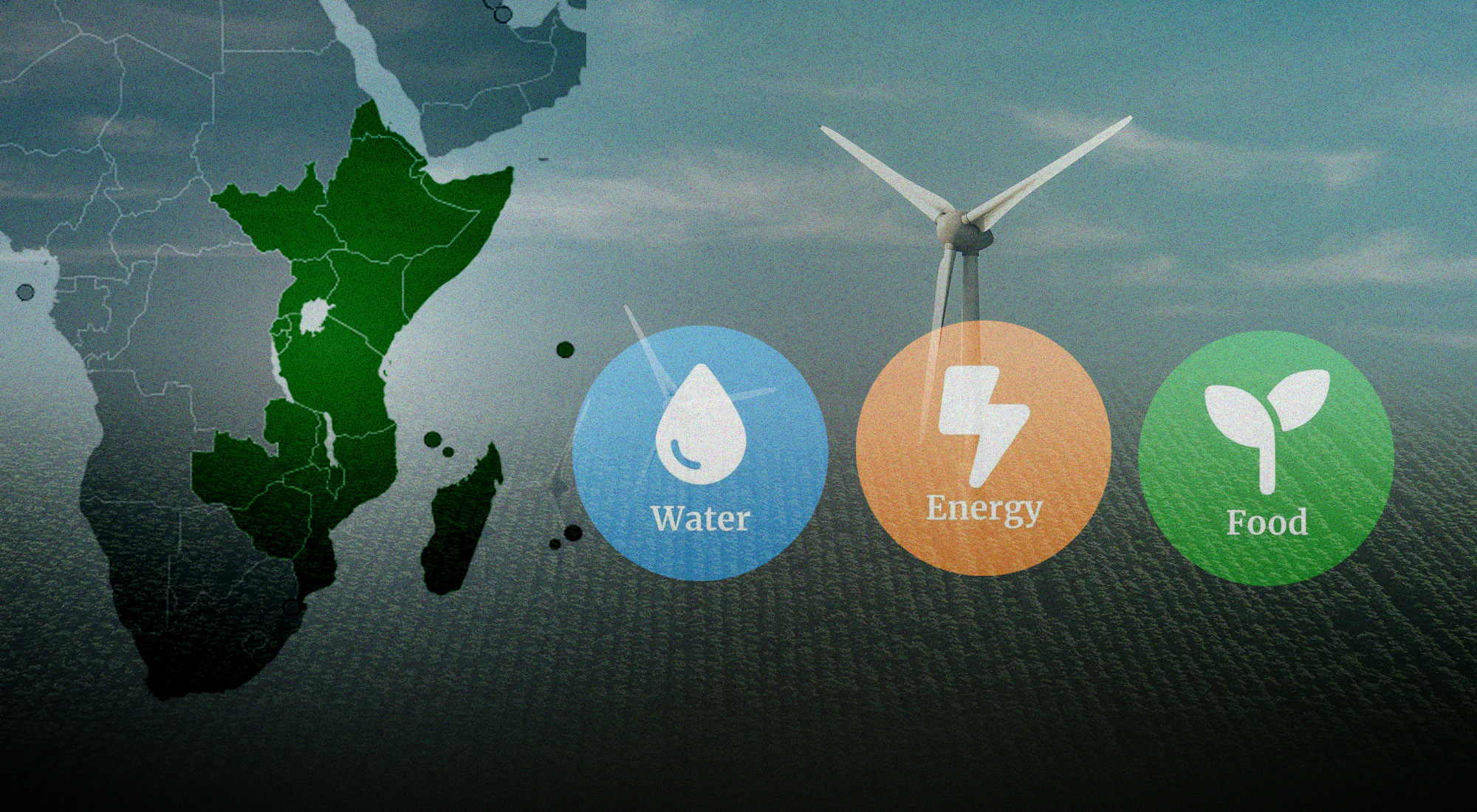Over the years, scientists have indicated that burning fossil fuels releases harmful gases such as carbon dioxide, methane and nitrous oxides into the atmosphere. When released into the atmosphere in huge amounts, these gases trap the Sun’s heat and wrap the Earth like a blanket, causing our planet to warm. This is what is known as the greenhouse effect.[1] Although the greenhouse effect is a naturally occurring phenomenon, and vital for life on Earth, excessive manmade emissions have intensified the greenhouse effect,[2] which in turn has led to generalized increases in temperature.
In light of the threats posed by global warming, renewable energy sources (solar, wind, and hydropower) have gained increasing attention over the years. These sources are found throughout nature and are replenished naturally. The concept of renewable energy itself is not new and dates back to the 19th century.[3] However, since the early1990s, the use of renewable energy sources for power production has come a long way. According to the International Energy Agency (IEA), the global supply of renewable energy grew at an average rate of 2% annually between 1990-2019, slightly above the 1.8% annual growth in total energy supply.[4]
Besides being a clean source of energy that is virtually inexhaustible,[5] renewable energy is the most inexpensive form of power. According to a report by the International Renewable Energy Agency (IRENA), “almost two-thirds or 163 gigawatts (GW) of newly installed renewable power in 2021 had lower costs than the world’s cheapest coal-fired option in the G20.”[6] The report also projected that investments made in renewable energy in 2021 would bring global energy generation costs down by around $55 billion in 2022. In addition, transitioning from coal to renewables is no longer an expense but rather a way of saving both money and the environment, as “renewables present countries tied to coal with an economically attractive phase-out agenda that ensures they meet growing energy demand, while saving costs, adding jobs, boosting growth and meeting climate ambition.”[7]
The global energy crisis that started with the COVID-19 pandemic in 2021, has been dramatically compounded by Russia’s war in Ukraine, further highlighting the importance of transitioning to renewable energy. Since the start of the conflict on 24 February 2022, Europe has faced soaring gas prices due to the reduction of Russian gas supplies. As a result, “Europe’s energy system faces an unprecedented crisis. Supplies of Russian gas—critical for heating, industrial processes, and power—have been cut by more than 80 percent […]. Wholesale prices of electricity and gas have surged as much as 15-fold since early 2021, with severe effects for households and businesses.”[8] To make matters worse, reserves are at an all-time low, further exacerbating the crisis.
Since the start of the energy crisis in 2021, European countries have allocated a total of €768 billion to mitigate the impact of high energy prices on consumers.[9] The measures put in place to protect consumers from the price spikes include reducing energy taxes, developing business support policies, and efforts to increase natural gas supply reserves. Yet, in the European market, the price of natural liquid gas surged to a record high in August 2022 to reach around €350 per megawatt hour [10] – the highest it has ever been since the beginning of the war. Naturally, fear spread across the continent when its largest gas supplier pulled out of the market, as Russian gas equates to 40% of the European gas market supply.[11]
As of now, natural gas prices are falling to pre-war levels. Although this is a good indication for the European energy market in general, the slowdown in Europe’s economy is expected to plunge half of the European union into a recession, according to the head of the International Monetary Fund Kristalina Georgieva.[12] Furthermore, falling gas prices indicate that there is a diminished demand for energy.
In November 2022, the European Commission put forward a proposal for a new instrument to regulate gas prices through a market correction mechanism.[13] This mechanism would protect households and businesses from sudden price spikes while complementing measures to reduce gas demand and secure energy supply through diversification of energy sources. The EU aims to cut reliance on Russian gas imports by over 30% within one year, with member states voluntarily agreeing to reduce natural gas demand by 15% this winter.[14] EU members are not signing any new supply contracts with Russia and are replacing Russian gas with alternative sources. With the current tensions between Russia and Ukraine, and the resulting energy crisis, Europe has stressed the need to increase reliance on renewable energy sources and to raise maximum energy storage capacity in the region. Currently, more than 20% of Europe’s energy comes from renewable energy sources.[15]
The EU Commission announced a short-term plan to phase out dependence on Russian gas through REPowerEU.[16] This plan is aimed at conserving energy, diversifying energy supplies, and accelerating the transition to green energy, with a view to ending dependence on Russian gas by 2027. The EU Commission is expected to pour approximately €210 billion into clean energy infrastructure, starting with power grids and renewable hydrogen and bio-methane production. In May 2022, the European Commission decided to integrate the REPowerEU plan into its Recovery and Resilience Facility, which is a temporary recovery instrument that aims “to mitigate the economic and social impact of the coronavirus pandemic and make European economies and societies more sustainable, resilient and better prepared for the challenges and opportunities of the green and digital transitions.”[17]
The success of the REPowerEU plan will depend on the successful implementation of the Fit for 55 package, which refers to the EU’s target of reducing total greenhouse gas emissions by at least 55% by 2030.[18] The package consists of a set of proposals aimed at revising existing legislation and introducing new initiatives in the areas of energy, transport, emissions trading and reduction, and land use and forestry. The objective is to lay out a solid and balanced framework for reaching the EU’s three main climate objectives, which “ensures a just and socially fair transition; maintains and strengthens innovation and competitiveness of the EU industry while ensuring a level fair field vis-à-vis third country economic operators; and underpins the EU’s position as leading the way in the global fight against climate change.”[19]
The Fit for 55 package is an integral part of the the 2019 European Green Deal, a long-term plan aimed at making Europe the first climate neutral continent by 2050.[20] The main objective of this plan is to reduce dependency on fossil fuels and reverse the greenhouse effect through decarbonization of the energy sector. This plan will reform Europe’s food, energy, and transport systems through the integration of renewable energy into these systems.[21] The European Green Deal will focus on integrating clean energy into major sectors that impact climate change directly. The most important sectors are the energy sector, the agricultural sector, and the industrial sector. According to the Organization for Economic Cooperation Development (OECD), the EU has set emission standards for key sources of pollution, which target “industrial emissions, emissions from power plants, vehicles and transport fuels, as well as the energy performance of products.”[22] The plan to legislate these key emission sources will help to achieve the EU’s “zero-pollution ambition for a toxic-free environment.”
Circular economy is also a vital element of Europe’s Green Deal as it constitutes a model of sustainable production and consumption.[23] The main goal of the circular economy is to extend the life cycle of a product and reduce waste to a minimum, thereby departing from the “take–make–consume–throw away” pattern.[24] This involves sharing, leasing, reuse, repair, refurbishment and recycling to allow products to be used again and again. Circular economy is not only cost-efficient, but “could deliver benefits such as reducing pressure on the environment, improving the security of the supply of raw materials, increasing competitiveness, stimulating innovation, [and] boosting economic growth,” while also reducing greenhouse gas emissions.[25] Currently, the European Union generates over 2.5 billion tonnes of waste annually.[26] Given the finite supply of critical raw materials and the growing demand due to population growth, shifting towards a circular economy becomes even more crucial.
Today, many European countries are leading the way in the transition to renewable energy. In 2020, over 70% of the electricity consumed in Austria (76.2%) and Sweden (75.7%) was generated from renewable sources.[27] The consumption of electricity produced from renewable sources was also significant in Denmark (62.6%), Portugal (58.4%), Croatia (53.5%) and Latvia (51.4%), accounting for over half of the electricity consumed. In 2021, Norway produced more electricity from renewable sources than it consumed, while in Iceland renewable energy provided almost 100% of electricity production – primarily due to hydro power.[28] However, some countries are lagging behind in the transition to renewable energy, with the share of electricity from renewable sources 15% or less in Malta (9.7%), Hungary (13.7%), Luxembourg (14.2%), Czechia (14.5%) and Cyprus (14.8%).[29]
To reach its ambitious plans, the EU will need big investments in low carbon sectors and will need to incentivize the private sector and neighbouring countries to join its carbon neutralizing plan before mid-century. The EU also plans to counter the international competition in climate change by enforcing a carbon tax on certain imports from other countries as well as other regulations regarding fossil fuel imports. It is also important to state that Europe’s plan to reach carbon neutrality through the Green Deal initiative is not a hard one but an important one. The EU has dealt with a lot of energy disruptions; the Covid-19 pandemic and the ongoing Russia-Ukraine war has brought to the fore the importance of increasing investments in the renewable energy sector. The EU also recognizes the importance of the green transition for economic growth and the wellbeing its member states and citizens as a whole.
References
[1] NASA, “What is the Greenhouse Effect,” NASA Global Climate Change, http://bitly.ws/AkkY.
[2] NASA, “The Causes of Climate Change,” NASA Global Climate Change, November 11, 2022, http://bitly.ws/AgUM.
[3] “Going Green: The History of Re‘New‘Able Energy,” Iowa State University Institute for Transportation, November 12, 2019, http://bitly.ws/AgV4.
[4] International Energy Agency (IEA), “Average Annual Growth Rates of World Renewables Supply, 1990-2019,” October 26, 2022, http://bitly.ws/AkAm.
[5] U.S. Energy Information Administration (EIA), “Renewable Energy Explained,” http://bitly.ws/AkUJ.
[6] International Renewable Energy Agency (IRENA), Renewable Power Generation Costs In 2021 (Abu Dhabi: IRENA, 2022), http://bitly.ws/AkZU.
[7] International Renewable Energy Agency (IRENA), “Majority of New Renewables Undercut Cheapest Fossil Fuel on Cost,” June 22, 2021, http://bitly.ws/Ah2t.
[8] Jeromin Zettelmeyer, Simone Tagliapietra, Georg Zachmann, and Conall Heussaff, “Beating the European Energy Crisis,” International Monetary Fund (IMF), December 2022, http://bitly.ws/Ah3d.
[9] Giovanni Sgaravatti, Simone Tagliapietra, Cecilia Trasi, and Georg Zachmann, “National Fiscal Policy Responses to the Energy Crisis,” Bruegel, February 13, 2023, http://bitly.ws/Ah3A.
[10] International Energy Agency (IEA), “Day-ahead and Month-ahead TTF Prices in European Union, August-October 2022,” November 2, 2022, http://bitly.ws/AnJZ.
[11] Gabriel Di Bella, Mark Flanagan, Karim Foda et. al., Natural Gas in Europe: The Potential Impact of Disruptions to Supply, International Monetary Fund (IMF), July 19, 2022, http://bitly.ws/AnLz.
[12] Stanley Reed, “Natural Gas Prices in Europe Fall to Pre-invasion Levels,” New York Times , January 3, 2023, http://bitly.ws/Ah3R.
[13] European Commission, “Commission Proposes a New EU Instrument to Limit Excessive Gas Price Spikes,” November 22, 2022, http://bitly.ws/AqcL.
[14] European Council, “Member States Commit to Reducing Gas Demand by 15% Next Winter,” July 26, 2022, http://bitly.ws/Ah4b.
[15] Eurostat, ” Renewable Energy Statistics,” January 2023, http://bitly.ws/AqdU.
[16] European Commission,” REPowerEU: Affordable, Secure and Sustainable Energy for Europe,” http://bitly.ws/Aqea.
[17] European Commission, “Recovery and Resilience Facility,” http://bitly.ws/Aqg2.
[18] European Council, “Fit for 55,” http://bitly.ws/Aqji.
[19] Ibid.
[20] European Commission, “European Green Deal: Commission Proposes Transformation of EU Economy and Society to Meet Climate Ambitions,” July 14, 2021, http://bitly.ws/Aqnh.
[21] European Commission, “A European Green Deal Striving to be the First Climate-neutral Continent,” http://bitly.ws/zDTs.
[22] OECD/European Union,”Air Pollution and Its Impact on Health in Europe: Why It Matters and How the Health Sector Can Reduce Its Burden,” in Health at a Glance: Europe 2020: State of Health in the EU Cycle (Paris: OECD Publishing, 2020), http://bitly.ws/AhYz.
[23] European Commission, “Circular Economy Action Plan,” http://bitly.ws/As4a.
[24] European Parliament, “Circular Economy: Definition, Importance and Benefits,” European Parliament News, December 2, 2015 (updated December 5, 2022), http://bitly.ws/As4T.
[25] Ibid.
[26] Ibid.
[27] Eurostat, “Renewable Energy Statistics,” http://bitly.ws/AskV.
[28] Ibid.
[29] Ibid.








